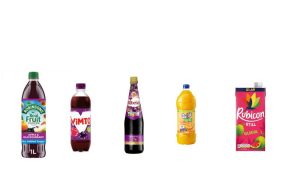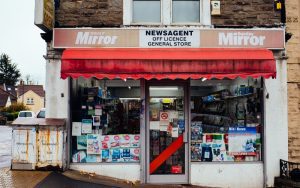In the retail world, every inch of shelf space counts. Effective shelf space management is crucial for maximising sales and enhancing the customer shopping experience. Proper organisation of products can significantly impact customer satisfaction and business success.
For confectionery items, this is especially important. These products often have high margins and fast turnover rates. Shoppers are drawn to sweets, chocolates, and other treats, which can lead to impulse buys. By optimising how these items are displayed, retailers can encourage customers to purchase more.
A well-organised confectionery section can also improve the shopping experience. When products are easy to find, customers spend less time searching and are more likely to make a purchase. It also helps create an attractive and inviting store environment. Properly categorised and displayed items are more appealing, making the store look neat and well-managed.
In this blog, we will explore strategies for managing shelf space effectively. We’ll cover categorisation, layout optimisation, and the use of data to improve sales. These principles will help retailers maximize their candy sections. This will boost customer satisfaction and sales.
Understanding the Basics of Shelf Space Management
Shelf Space Management is the strategic organisation of products on retail shelves. It plays a crucial role in maximising sales and improving the shopping experience. Good management makes popular products easy to find. This can boost customer satisfaction. For confectionery items, this management presents unique challenges. Confectionery products are diverse, with a wide variety of shapes, sizes, and packaging. They often include chocolates, sweets, and gums, each requiring different display methods. Seasonal changes affect these items. Demand can vary during holidays and special occasions. Retailers must be flexible and adapt their displays to accommodate new products and promotions. To drive sales and keep a nice store layout, balance the candy variety with the shelf space.
1. Categorising Confectionery Items
Effective categorisation of confectionery items is essential for an organised display. Grouping items by type is a common approach, allowing customers to find specific products quickly. For example, separate sections for chocolates, candies, and gums make shopping more intuitive. Categorising by brand can also be effective, especially for customers loyal to specific labels. This approach can enhance brand recognition and encourage repeat purchases. Price range categorisation helps customers make quick decisions based on their budget. Additionally, dietary preferences, such as sugar-free or vegan options, should be clearly marked and grouped together. This makes it easier for health-conscious customers to find suitable products. Clear categorisation improves customer satisfaction and encourages purchases by simplifying the shopping process.
2. Optimising Shelf Layout
An optimised shelf layout is crucial for maximising product visibility and sales. Placing items at eye level ensures they are easily seen and accessed by customers. Eye-level placement is particularly important for high-margin or promotional items. Horizontal arrangements can highlight a variety of products across the same brand or type, making it easier for customers to compare options. Vertical arrangements work well for tiered pricing, with premium products at the top and budget options at the bottom. End caps are highly effective for promoting special deals and new arrivals. These areas are prime real estate for attracting customer attention. Impulse buy zones, such as checkout areas, can significantly boost sales by encouraging last-minute purchases. Using these strategies can create a more dynamic and engaging shopping environment.
3. Balancing Stock Levels
Maintaining optimal stock levels is vital to preventing overstocking and stock outs. Overstocking can lead to wasted space and potential markdowns, while stock outs can frustrate customers and result in lost sales. Regular inventory checks are essential to keep track of stock levels and ensure popular items are always available. Retailers can use sales data to forecast demand and adjust orders accordingly. Technology can play a key role in managing stock levels, offering real-time tracking and alerts for low inventory. This helps retailers respond quickly to changing customer demands. By balancing stock levels effectively, retailers can maintain a well-stocked and appealing store.
4. Seasonal and Promotional Displays
Seasonal and promotional displays are crucial for keeping the store vibrant and engaging. Adjusting shelf space for seasonal products allows retailers to capitalise on increased demand during holidays and special occasions. For example, displaying chocolates prominently during Easter or Christmas can boost sales. Promotional displays can also encourage impulse buys, drawing attention to special deals or limited-time offers. Creative and themed displays capture customer interest and make shopping more enjoyable. They also reinforce the store’s branding and enhance the overall shopping experience. Regularly updating displays keeps the store fresh and encourages repeat visits.
5. Leveraging Data and Technology
Data and technology are powerful tools for effective shelf space management. Data analytics helps retailers make informed decisions about product placement and stock levels. By analysing sales data, retailers can identify which products are most popular and allocate more shelf space to them. Technology offers tools for real-time inventory tracking, providing insights into current stock levels and trends. Software solutions can also analyse customer preferences and predict future demand. This allows retailers to optimise shelf layouts and ensure they meet customer needs. Leveraging data and technology leads to more efficient operations and better customer satisfaction.
6. Engaging Customers
Engaging customers is key. It improves shelf space management and the shopping experience. Customer feedback provides valuable insights into product preferences and layout effectiveness. Retailers can use this feedback to improve the shopping experience. It shows customers that the store values their input. This builds loyalty and repeat business. Also, offering personalized recommendations and promotions based on shopping habits increases engagement. Retailers can improve their stores by listening to customers and making changes. This will create a more appealing and effective shopping environment.
Read More: How Convenience Stores are Adapting to Changing Consumer Preferences
Conclusion
Managing shelf space effectively is vital for retailers, especially for confectionery items. Proper organisation and display of these products can significantly impact sales and customer satisfaction. By learning shelf space management, retailers can optimize their layouts to attract customers. Categorising products thoughtfully and using strategic layouts enhances the shopping experience. Retailers should regularly review and adapt their shelf strategies. This helps meet evolving customer needs and maximise sales. A well-organised candy section boosts sales. It also enhances the brand and customer loyalty.
Let’s work together to create the best shopping experience for your customers.





